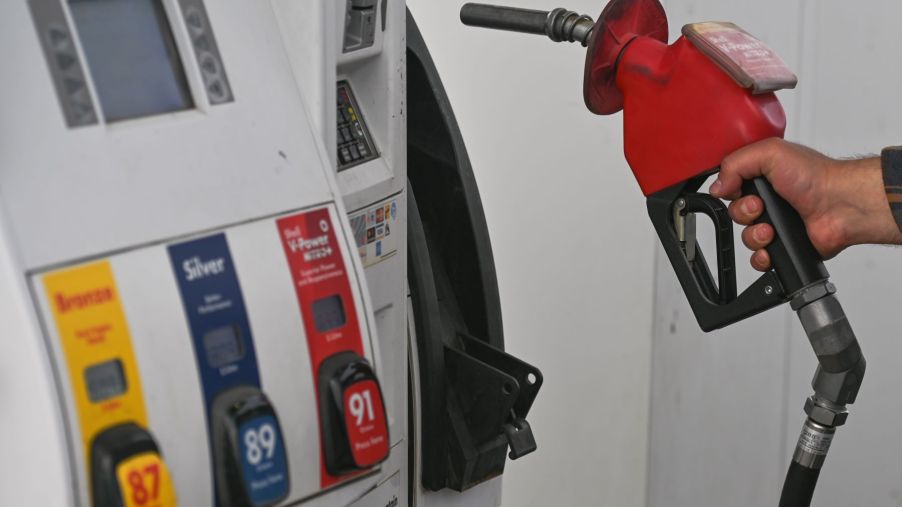
Can You Mix Premium and Regular Gas to Save Money at the Pump?
Gas prices are still soaring throughout the country, leaving many drivers trying to figure out how to save money when they fill up. Some drivers are selling their gas-guzzling trucks and SUVs in favor of hybrid or electric cars, while others are resorting to hypermiling techniques. However, if you don’t want to go to extreme measures, is it possible to simply mix different octanes of fuel to save money at the pump?
Mixing octanes to save money

Apparently, yes, you can actually save money by mixing two different octanes at the pump. Joe Wisenfelder at Cars.com put this theory to the test in their 2021 Ford F-150. Their truck testing requires that the truck be filled up with premium 91-octane fuel, however, in their hometown of Chicago, only 89- and 93-octane are available.
The solution? Fill up half of the tank with the 93-octane and then fill the rest with the 89-octane swill, thus resulting in a tank filled with 91-octane fuel. In terms of the actual benefits, it’s simple math.
In Wisenfelder’s experiment, the 93-octane fuel cost $5.199 and the 89-octane fuel cost $4.799. To perform the experiment, Wisenfelder filled the F-150’s 30-gallon tank halfway with the premium (93) fuel, which topped out at $75. He then filled the tank the rest of the way with 89-octane fuel, which ended up costing $60.96. The total cost was $135.96.
According to Wisenfelder, had he continued to fill the tank with the 93-octane fuel, it would have cost him $66.03. So he ended up saving $5.07.
Is mixing gas octanes really worth the effort?

Yes, because you can actually save some money depending on the type of fuel your vehicle requires and how much fuel its tank holds. In Wisenfelder’s experiment, it worked out well because the F-150’s gas tank is massive and it’s able to run on 91-octane. So the overall cost savings was decent. After all, a savings of $5 is the equivalent of a gallon of gas.
However, this experiment wouldn’t work as well on a 2022 Honda Civic SI, for example. The Civic Si runs on 91-octane and holds 12.4 gallons of fuel. If we use the same gas prices that Wisenfelder used, including the same fuel split – 6.2 gallons each of 89- and 93-octane – then we get a total fill-up cost of $61.98. However, if you were to fill up the Civic’s tank with only 93-octane fuel, then it would cost a total of $64.46.
In this small experiment, mixing the fuel octanes would only save a total of $2.48, which could be worth it to some penny-pinching drivers, but not so much for others.
Just remember to follow the manufacturer’s guidelines

While you technically can’t hurt your car by mixing fuel octanes, it’s worth it to note that following the manufacturer’s recommended octane rating is important. If your car only requires 87-octane fuel for optimum performance, then just use that. Don’t try and mix fuels as there won’t be an added benefit.
However, if you do plan to mix fuels in your car, also keep in mind that you’ll have to do two separate transactions at the pump. In some cases, like a Ford F-150, it could be worth the extra effort. But in other cases like a Honda Civic, it probably is not.



